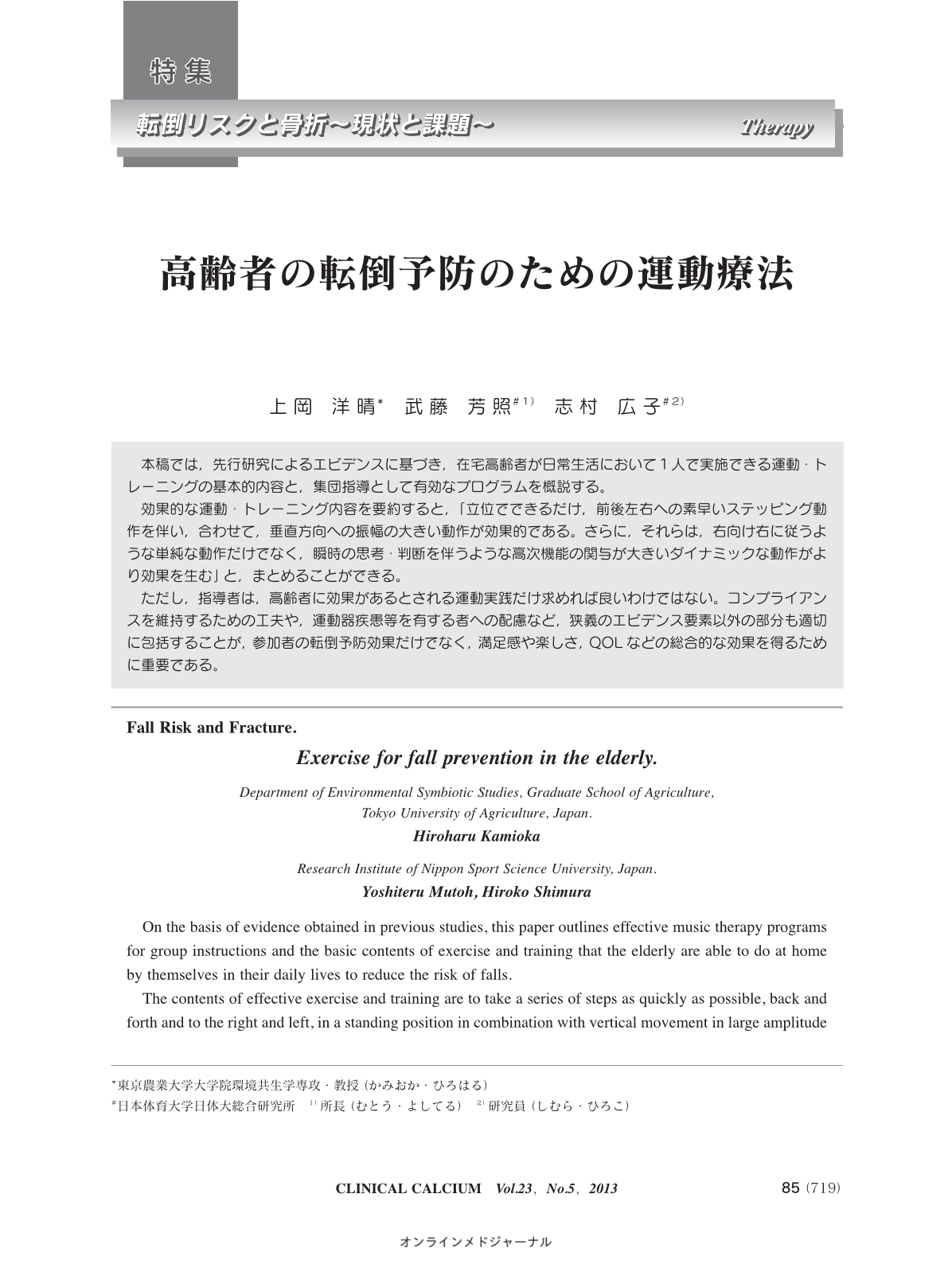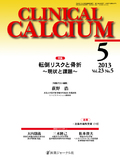Japanese
English
- 有料閲覧
- Abstract 文献概要
- 1ページ目 Look Inside
- 参考文献 Reference
本稿では,先行研究によるエビデンスに基づき,在宅高齢者が日常生活において1人で実施できる運動・トレーニングの基本的内容と,集団指導として有効なプログラムを概説する。 効果的な運動・トレーニング内容を要約すると,「立位でできるだけ,前後左右への素早いステッピング動作を伴い,合わせて,垂直方向への振幅の大きい動作が効果的である。さらに,それらは,右向け右に従うような単純な動作だけでなく,瞬時の思考・判断を伴うような高次機能の関与が大きいダイナミックな動作がより効果を生む」と,まとめることができる。 ただし,指導者は,高齢者に効果があるとされる運動実践だけ求めれば良いわけではない。コンプライアンスを維持するための工夫や,運動器疾患等を有する者への配慮など,狭義のエビデンス要素以外の部分も適切に包括することが,参加者の転倒予防効果だけでなく,満足感や楽しさ,QOLなどの総合的な効果を得るために重要である。
On the basis of evidence obtained in previous studies, this paper outlines effective music therapy programs for group instructions and the basic contents of exercise and training that the elderly are able to do at home by themselves in their daily lives to reduce the risk of falls. The contents of effective exercise and training are to take a series of steps as quickly as possible, back and forth and to the right and left, in a standing position in combination with vertical movement in large amplitude for center of gravity. Furthermore, simple movements such as obeying an order of "right face", as well as dynamic movements that mostly involve higher brain functions such as instant thinking and judgment, are more effective. It should be noted that it is not sufficient for instructors to merely demand that the elderly do effective exercise. To prevent falls by the participants and to also obtain comprehensive effects such as satisfaction, amusement, and quality of life(QOL),it is important to pay appropriate attention to parts other than the narrowly-defined evidence elements, such as modifications to maintain compliance and consideration of people with locomotive syndrome.



